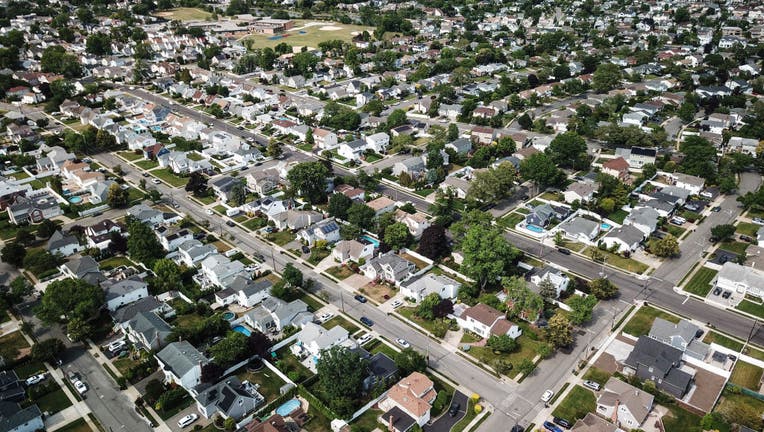The four US cities facing the biggest housing shortages

This is an aerial image of a northeast view of a community of homes in Merrick, New York on June 20, 2023. (Photo by Steve Pfost/Newsday RM via Getty Images)
Prospective homebuyers across the U.S. are facing a chronic shortage of available houses, but the scarcity is worse in some parts of the country, according to new Bank of America research.
The analysis found four cities are at the epicenter of the crisis, with three located in Texas — San Antonio, Dallas and Houston. Finishing off the list is Orlando, Florida.
"The hot quadrant includes cities that continue to have fast inward population growth and already relatively stretched housing stocks," the study said. "San Antonio, Dallas, Orlando and Houston all fall under this categorization."
That is largely because these cities are experiencing high population growth, a "booming" labor market and low housing inventory. As of June 2023, Dallas and Orlando both recorded payroll growth that is substantially higher than the national average and continue to attract new residents looking for work, according to the report.
COMMERCIAL REAL ESTATE MARKET COULD CRASH SOON. HERE’S WHY
But that influx of new residents is a double-edged sword, with housing stock relative to population in these cities tumbling below the national average. The national average of housing units per capita was about 0.43% as of 2022, compared to just 0.39% in Dallas and 0.40% in San Antonio.
As a result, these cities are also seeing home price growth that is far higher than the typical level seen the past two years. When compared with the same month in 2019, home prices in Orlando were up 58%. Dallas saw prices increase by about 49%.
MORTGAGE CALCULATOR: SEE HOW MUCH HIGHER RATES COULD COST YOU
There are signs the cities are working to address the lack of available homes. All four cities saw higher-than-average permits issued per capita during the first five months of 2023, and new multifamily completions are set to hit a record high in 2024 as COVID-19-related disruptions dissipate.
"So, while the good news is that cities with lower housing supply are already seeing higher construction trends, the question is whether supply will continue to keep up if the inward migration trends are sustained in these growing parts of the country," the study said. "If not, there will continue to be a strong housing need."
There also cities on the opposite end of the spectrum that are experiencing a relatively high housing supply, which is either due to declining population or excess construction. St. Louis and Detroit likely fall into the former category, while Miami may be emblematic of the latter.
In all three instances, it could mean homeowners should brace for a drop in values.
"So what does this mean for the local housing market?" the note said. "It could mean that house prices might cool faster over the long term when home selling traffic picks up again."
A FED PAUSE LIKELY WON’T HELP STRUGGLING CONSUMERS
Bank of America conducted the analysis by looking at real-time migration flows based on its internal data and housing stock.
The findings come as would-be homebuyers and sellers grapple with a nationwide housing shortage. The most recent estimates from Freddie Mac suggest the country is short about 3.8 million units of housing for both sale and rent.
GET FOX BUSINESS ON THE GO BY CLICKING HERE
The lack of inventory has kept prices uncomfortably high, even though mortgage rates are hovering near the highest level in decades.
"Current housing market dynamics continue to be fueled by the lack of existing homes available for sale, a trend that did not improve during the spring homebuying season, when more homes are typically put on the market," Fannie Mae economists wrote in the analysis.
"This has supported a return to home price growth in recent months and continued to boost new home construction."
Read more of this story from FOX Business.

